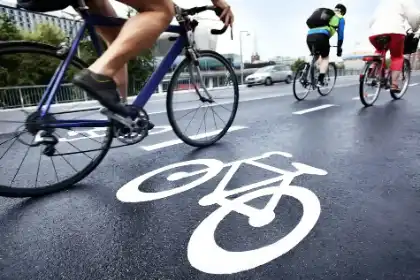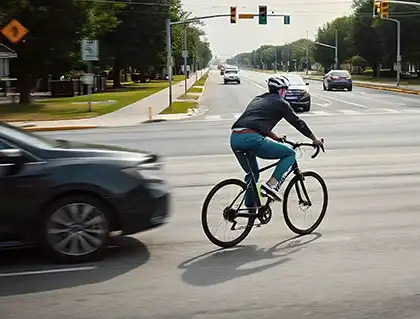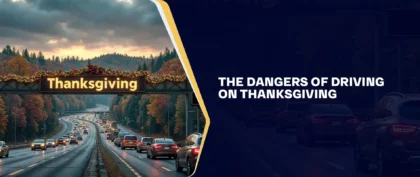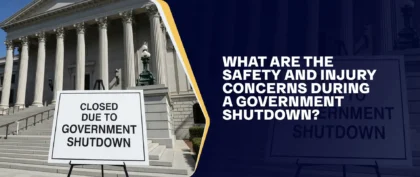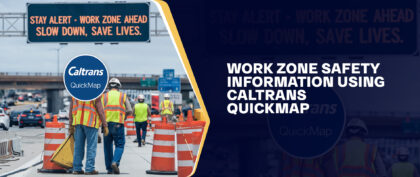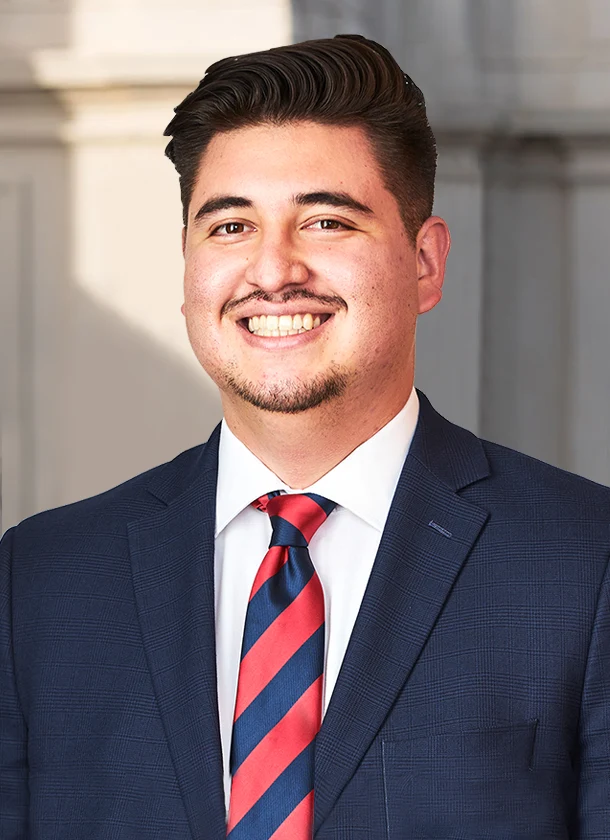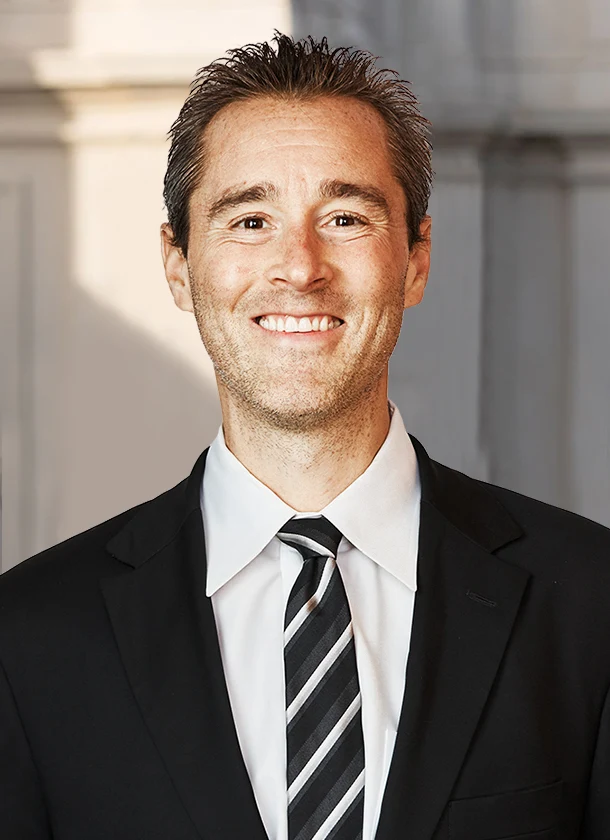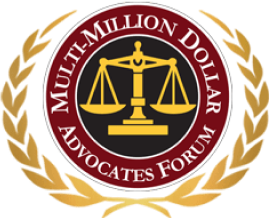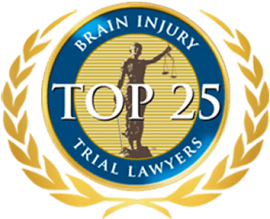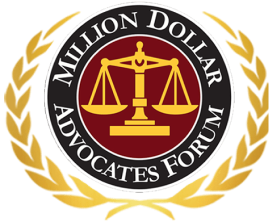Table of Contents
Cycling has become a preferred choice for many for commuting, exercising, and enjoying leisure time. While it offers an exhilarating sense of freedom and connection to the outdoors, it also presents significant risks that every cyclist must know. Balancing the thrill of the ride with safety precautions is essential for a rewarding experience.
The National Safety Council reports that thousands of cyclists are injured or killed in traffic accidents each year. Unlike motorists, cyclists lack the protection of a vehicle’s frame, leaving them highly vulnerable in a crash.
Bicycle accidents often lead to severe injuries, including broken bones, head trauma, spinal cord damage, and internal injuries. Even with a helmet, cyclists can face serious injuries, including broken bones, head trauma, spinal cord damage, and internal injuries after a collision. Unfortunately, many of these accidents stem from driver negligence and failure to yield to cyclists. Motorists frequently fail to acknowledge that cyclists have the same rights and responsibilities on the road, leading to dangerous encounters and accidents.
Understanding the causes of bicycle accidents, the role of driver negligence, and the legal options available to injured cyclists is crucial. This article will explore these key issues and how victims can seek justice and compensation.
Failing To Yield The Right Of Way Causes Most Bike Accidents
The right of way refers to a road user’s legal priority over another in certain traffic situations. According to the National Highway Traffic Safety Administration, failing to yield the right of way is a significant factor behind fatal bicycle accidents. Like all road users, cyclists have the right to travel safely and be treated with the same respect as drivers. However, many accidents happen when motorists ignore or misunderstand traffic laws that give cyclists the right of way, putting them in danger.
Drivers must yield to cyclists at intersections and stop signs and when crossing bike lanes. Unfortunately, some drivers fail to do so — whether out of negligence, impatience, or lack of awareness. For example, a driver making a left turn at an intersection may fail to check for oncoming cyclists, carelessly assuming they have the right of way. This kind of negligence can lead to a devastating collision, throwing the cyclist off their bike and causing severe injuries, such as broken bones, head trauma, or spinal damage.
Failure-to-yield accidents also occur in crosswalks and bike lanes. Many drivers are unaware that cyclists have legal priority in these areas, leading to dangerous situations. A typical example is a driver pulling out of a driveway or parking lot without checking for cyclists in the bike lane, forcing the rider into oncoming traffic, or causing a direct crash.
When these accidents occur, injured cyclists often face medical expenses, time away from work, and a difficult recovery. Bicycle accident lawyers can review the circumstances, collect evidence such as traffic footage or witness accounts, and handle communication with insurers and other parties.
Other Causes Of Bicycle Accidents
While failing to yield the right of way to cyclists is a significant cause of bicycle accidents, several other contributing factors exist. Here are some of them:
Dooring
Global data suggest that dooring, when a driver or passenger opens a car door into a cyclist’s path, causes 3% to 10% of all bike accidents resulting in injuries. A bicycle rider coming by may get hit by the door or try to avoid it by hitting a curb and swerving into traffic. Their sudden reaction might result in them colliding with another car. Many bike courier incidents, such as Uber Eats and DoorDash accidents, occur due to dooring.
Distracted Driving
One of the leading causes of bicycle accidents is distracted driving. With the rise of smartphones and in-car technology, many drivers often text, talk, or use navigation apps. Uber and Lyft drivers may use the ridesharing app to accept ride requests.
Other accident-causing distractions include eating, drinking, talking to passengers, and looking at random things outside their vehicles. These distractions prevent them from looking for cyclists, which can result in accidents. Injured riders may turn to a personal injury lawyer for guidance on what to do next and how to pursue the damages from the crash.
Keeping An Unsafe Distance
One of the fundamental principles of defensive driving is maintaining a safe following distance from other vehicles, motorcycles, and bicycles. California law requires drivers to leave at least three feet of space when passing a cyclist. This practice helps drivers react to sudden changes in traffic conditions and provides enough time to stop or slow down if necessary, preventing accidents. However, when drivers fail to keep an adequate distance, especially from cyclists, they increase the risk of rear-end collisions and other dangerous situations.
Speeding
Driving too fast makes it more difficult for drivers to react quickly to what’s happening on the road. When they notice a hazard, it may already be too late. Speeding not only increases the chances of colliding with a biker but also worsens the resulting injury and may even cause death. When a vehicle travels at high speeds, the impact force during a collision is significantly greater, leading to more severe injuries.
Additionally, the increased stopping distance at higher speeds reduces a driver’s ability to react in time to avoid a collision. Time to assess and respond to hazards diminishes, making it more likely for a driver to miss seeing a biker or to react too late, ultimately resulting in catastrophic outcomes.
Hitting the brakes at the last second isn’t enough to avoid a speeding-related accident when a cyclist is in the way. Drivers need both reaction time and stopping distance to brake safely.
- Reaction time (or thinking distance) is how long it takes a driver to notice a hazard and decide to stop.
- Stopping distance (or braking distance) is how far the car travels before coming to a complete stop.
Even at just 20 mph on a residential street, a car needs more space to stop than many drivers realize, especially if they’re distracted or not fully paying attention. In these cases, traffic accident lawyers may play a key role by examining accident reports, vehicle data, and expert testimony to establish whether speeding contributed to the crash.
Weaving & Unsafe Lane Changes
When drivers change lanes without signaling or checking their blind zones, they risk colliding with cyclists. Similarly, drivers who weave in and out of traffic put cyclists and other motorists at risk of being involved in an accident. These reckless driving behaviors increase the likelihood of drivers losing control of their vehicles and veering or drifting out of their traffic lanes and into bike lanes and shoulders.
Improper Right Turns
Most large vehicles, particularly massive commercial ones like big rigs, have blind spots on both sides. Drivers must be aware of these blind spots. If they fail to check their blind spots when turning right, they risk colliding with cyclists with the legal right to proceed. A truck accident can easily lead to severe or fatal injuries for the cyclist.
Driving Under The Influence
Drinking or using drugs and driving is never a good combination. Alcohol, drugs, and even prescription medications affect drivers’ reaction time, vision, and other crucial skills necessary to drive safely. As a result, impaired drivers cannot react as fast as needed to avoid a nearby biker, increasing the chance of a DUI accident.
Driver Fatigue
Driving while drowsy or fatigued is similar to driving under the influence. The accidents that can result and their consequences are also similarly devastating. Drivers must obtain adequate sleep before driving and refrain from operating a motor vehicle when they don’t have enough rest.
Running Red Lights Or Stop Signs
When drivers run red lights or fail to stop at stop signs, they not only break the law but also endanger everyone on the road, particularly vulnerable groups like cyclists. Cyclists have less protection than motorists and are at risk of severe injuries. Accidents caused by drivers violating traffic signals result in significant injuries, such as head injuries, traumatic brain injuries, and, in some cases, even fatalities.
Consulting with experienced collision lawyers can help injured cyclists understand their legal options and explore potential avenues for compensation after such accidents.
Poor Road Conditions
Dangerous road conditions contribute to a significant number of bicycle accidents. Potholes may cause cyclists to lose control and crash, especially if they don’t see these depressions in advance. Debris, such as in hazardous construction zones, poses a danger to cyclists.
Poor road design is also a common contributing factor behind bike collisions. Many of our roads prioritize vehicles over cyclists and pedestrians. Some areas have bike lanes, but these are often poorly marked or poorly maintained.
Nighttime Or Low-Light Conditions
Bike accidents can happen at night when it is difficult for drivers to see riders. Additionally, hazards on the road, such as potholes and debris, pose significant risks for cyclists in low-light conditions. Victims of bicycle accidents, primarily cyclists, can file a claim or lawsuit against the at-fault driver to obtain financial compensation for their losses.
Hiring experienced bicycle accident lawyers can significantly alleviate the stress of navigating the legal process. Identifying the factors behind the crash can help bicycle accident victims hold the responsible party liable for their injuries and damages.
Determining Liability In Bicycle Accident Claims And Lawsuits
The law allows bicycle accident victims to seek compensation for their injuries through an insurance claim or legal action against the responsible party. To hold someone liable, you must prove negligence, which consists of four key elements:
- Duty of Care — The responsible party was legally obligated to act safely and avoid causing harm. For example, drivers must yield to cyclists in bike lanes and at intersections.
- Breach of Duty — They failed to uphold this duty by acting carelessly or recklessly. For example, a driver who runs a red light and collides with a cyclist breaches their duty of care to the latter.
- Causation — Their negligence directly caused the accident and your injuries. If a driver opens their car door without checking for cyclists, causing a rider to crash, their action directly leads to harm.
- Damages — You suffered actual harm, such as medical expenses, lost wages, or pain and suffering. A cyclist who breaks a leg in a crash may face high medical bills and months of lost work.
Multiple parties may be responsible for a bicycle accident, including:
- Negligent Drivers — The most commonly liable party. A speeding driver who fails to stop at a crosswalk may strike a cyclist legally crossing the street.
- Pedestrians & Other Cyclists — A pedestrian stepping into a bike lane without looking or a cyclist suddenly swerving into another rider’s path can cause serious crashes.
- Bicycle or Parts Manufacturers — A faulty brake system or defective tire could lead to a crash, making the manufacturer responsible.
- Government Agencies & Property Owners — Poor maintenance can cause accidents, potentially making the city or property owner liable. Potholes, uneven road surfaces, or obstructed bike lanes can cause accidents.
Determining liability can be complex. An experienced bicycle accident attorney can investigate the case, identify all negligent parties, and help you pursue the compensation available to you.
What If Both The Bicyclist And Driver Are At Fault For An Accident?
While most bicycle accidents are caused by drivers of vehicles who fail to see a bicyclist, it can still be difficult to assign blame to the driver or any single party. The fact that some bicyclists occasionally break traffic laws further complicates the situation when an accident happens.
Some bike accidents occur due to various factors, so both the rider and the driver may share some degree of blame. In other cases, multiple parties are involved and are all responsible for causing the accident. The comparative negligence rule could apply to these situations. In California, the pure comparative negligence system allows injured parties to recover compensation even if they are found to be 99% responsible.
For example, the cyclist failed to stop at a stop sign or a red light and collided with a distracted driver. The other party may use the cyclist’s violation of traffic laws to pin the blame on them. While this does not automatically bar the cyclist from seeking compensation, the concept of comparative negligence comes into play. If they are set to recover $100,000 in damages but are found to be 30% at fault, they will ultimately receive $70,000. Speaking with experienced bike accident lawyers can help you understand how comparative negligence may apply to your situation and what compensation may be available.
Recoverable Compensation After A Bicycle Accident
According to California law, injury compensation is the responsibility of the careless driver or any other negligent party. Once proven liable, they are legally responsible for the injured victim’s current and future damages, especially if the injury leads to long-term consequences that require ongoing medical care. Among these damages that accident victims might be entitled to obtain are:
- Medical expenses, including related past, present, and future treatments.
- Lost wages and reduced future earning capacity.
- Property damage.
- Other out-of-pocket expenses, including childcare and transportation.
- Pain and suffering.
- Wrongful death damages if a loved one is tragically killed.
Common Injuries After A Bicycle Accident
Due to a lack of protection, a bike accident could leave riders with severe injuries. The following are the most frequent injuries brought on by bicycle accidents:
- Road Rash — Road rash, classified as an abrasion, is a superficial flesh injury that bicyclists sustain in a bike accident after falling and skidding on the road. Analysis of 5-year data from 2017 to 2021 of bike injuries recorded in U.S. emergency departments showed contusions and abrasions made up 19% of the injuries.
- Soft Tissue Damage — Cuts, bruising, sprains, and strains can occur in serious falls, and depending on the extent of the injury, they might take a few weeks to several months to heal.
- Internal Injuries — Internal bleeding and damage to internal organs can result from particularly catastrophic bicycle accidents.
- Fractures — Some collisions are severe enough to result in broken bones, particularly in the arms, legs, ribs, collarbone, pelvis, and skull. Fractures made up 26% of injuries in the study above.
- Dental Injuries — A cyclist who strikes their face risks breaking or chipping a tooth, which might result in hundreds of dollars in dental bills.
- Traumatic Brain Injuries — A rider can hit their head during a crash, resulting in a head injury that ranges from minor concussions to more serious brain injury.
- Paralysis — Partial or complete and permanent paralysis may result from severe brain or spinal cord injuries sustained in a bicycle accident.
Applicable Insurance Coverage For A Bicycle Accident Claim
Several insurance policies may cover your bicycle accident claim. Possible avenues of compensation include the following:
At-Fault Party’s Auto Insurance Policy
Injured bicyclists or the families of cyclists killed in motor vehicle accidents may be entitled to recover compensation from the driver’s auto insurance coverage. They must prove that the driver is at fault in the accident. In California, all motorists must have auto insurance that meets the following minimum requirements as of January 1, 2025:
- $30,000 for bodily injury or death per person.
- $60,000 for bodily injury or death per accident.
- $15,000 in property damage per accident.
Bicycle accident victims may have to rely on other avenues if their losses exceed the policy limits of the at-fault driver’s insurance coverage. This is especially true when drivers only have the minimum policy amounts.
Uninsured/Underinsured Motorist Coverage (UM/UIM)
Some drivers allow their insurance to lapse, leaving them without coverage when they are involved in collisions. Others only have the state-mandated minimum liability amounts. Getting injured in a bike accident with an uninsured or underinsured driver is stressful, but you have options.
Every auto insurance policy must include an endorsement of uninsured motorist coverage. Having this coverage protects you in the event that an uninsured driver hits you. The at-fault driver’s policy would cover up to the policy limits before your UM/UIM coverage kicks in to cover the rest.
Medical payments are also included in most insurance policies. Your medical costs may be covered up to a specific limit, with many policies having limits of $5,000 to $10,000. You may consider alternative options if your medical expenses exceed the coverage limits. If your medical costs exceed these limits, consulting with uninsured motorist accident attorneys can help you understand your options and assess potential additional recovery through your insurance or other legal avenues.
Personal Health Insurance
You can use your health insurance to pay for your medical fees if your other sources of coverage are insufficient. Subject to the conditions of your policy, including the payment of copays and deductibles, your health insurance may help with your medical bills. This can be helpful while your injury claim is being processed.
Homeowner’s Or Renter’s Insurance
You should review your homeowner’s or renter’s insurance coverage. If your bicycle is damaged by someone else, these policies may cover it. Depending on the conditions specified in your policy, bodily harm may also be covered.
Disability Insurance
Perhaps you have short- or long-term disability coverage through your employer or as a standalone policy. In the event of an accident, such insurance may replace your income up to the policy’s limit. When you cannot work, this coverage replaces a portion of your lost income.
Bicycle Insurance
Insurance companies recognize the dangers associated with bicycle accidents and the coverage requirements of riders. As a result, many businesses are now offering insurance plans specifically designed for bikers and their motorcycles. These plans cover bodily injury, property damage, and theft.
Steps To Take After A Bicycle Accident
While a bicycle accident can be highly stressful, it’s crucial to maintain composure and follow the steps below if possible. The following steps are not legal advice and are provided for informational purposes only:
- Prioritize Safety — Move to a safe location, but do not leave the scene. Wait for medical assistance to arrive if you have severe injuries that prevent you from moving.
- Call the Authorities — The authorities will document the accident, so it’s crucial to call them immediately. The police report can be valuable evidence in your claim later on.
- Seek Medical Care — Get medical help even if you feel fine. You can have a concussion or internal damage that is not immediately noticeable. Postponing medical care can also make it more difficult to receive compensation for your injuries.
- Gather Evidence — Take photos of the scene, the damage to your bicycle, and any other cars involved. Moreover, note the weather and other relevant details.
- Exchange Information — Get the other party’s contact and insurance details and provide them with yours. Additionally, obtain the names and contact details of any witnesses.
- Talk to a Lawyer — Get in touch with a bike accident lawyer after receiving medical care and recording the incident. Skilled bicycle accident attorneys can guide you through the claims process and help you pursue the compensation available to you. If the accident resulted in a fatality, a lawyer can help the family of the victim file a wrongful death claim or lawsuit to recover damages.
How To Prevent Bicycle Accidents
Cyclists can reduce the risk of accidents by following essential safety measures. Here’s how to stay safe while riding:
Visibility & Awareness
- Wear bright, reflective clothing, especially at night.
- Use front and rear lights and reflectors as required by law.
- Stay alert at intersections, and assume drivers may not see you.
- Watch for turning vehicles and be cautious near slowing cars.
Defensive Riding
- Keep at least three feet away from parked cars to avoid dooring accidents.
- Pay attention to turn signals and slow down to prevent right-hook crashes.
- Use hand signals to communicate stops, turns, and lane changes.
- Follow all traffic laws, including stop signs and right-of-way rules.
Equipment & Maintenance
- Always wear a helmet. Research indicates helmets provide significant protection, reducing head injury risk by approximately 50%.
- Ride in designated bike lanes whenever possible.
- Regularly check your brakes, tires, and chains for safety.
By following these precautions, cyclists can significantly reduce their risk of injury and ride more safely.
Why You May Need Experienced Lawyers After A Bicycle Accident
Bicycle accidents differ from car accidents and other traffic accidents because cyclists absorb the full force of a heavier, faster vehicle. As vulnerable road users, they often suffer severe or catastrophic injuries. This is why many riders consult car accident lawyers to determine their next steps.
Minor collisions with little to no damage typically don’t need legal counsel and action. However, the nature of bike accidents makes hiring a bike accident injury lawyer a beneficial decision. With the right bicycle accident lawyer, accident victims can get the assistance they need to pursue fair compensation for their injuries. A lawyer can:
- Identify fault and establish liability.
- Gather evidence and build a strong case.
- Talk to witnesses and experts.
- Handle paperwork.
- Negotiate with insurance companies.
- Advocate for a fair settlement.
- Represent your case in court if necessary.
The bike accident lawyers at Arash Law are confident in their ability to handle cases and provide each client with solid legal advice and assistance. The team is committed to providing clear and strategic advice, working to help every client understand their legal rights and options. They work to build well-supported cases, gather crucial evidence, and pursue fair compensation.
Deadline For Filing A Lawsuit After A Bicycle Accident
States have different statutes of limitations or deadlines for bringing a lawsuit following a personal injury due to an accident, including bicycle crashes. In California, victims generally have two years after the accident or discovery of the injury to file a lawsuit against the negligent party to pursue damages.
You might not be able to get any compensation for your injuries if you don’t bring your lawsuit within the allotted time. This is another reason why hiring reliable bike accident attorneys is advisable when pursuing monetary damages.
Bicycle Accident Statistics
According to the National Highway Traffic Safety Administration, 1,105 bicyclists were killed in motor vehicle traffic crashes in 2022, a 13 percent increase from 976 in 2021. The NHTSA reports that bicycle trips make up 1 percent of all trips in the United States, yet bicyclists account for 2 to 3 percent of people who die in crashes involving motor vehicles.
According to the NHTSA, approximately 81 percent of bicycle fatalities occur in urban locations. Bicycle-related fatalities tend to be higher during warmer months, with peak periods typically occurring in summer and early fall.
Frequently Asked Questions About Bicycle Accidents
Can I File A Claim If I’m Not Wearing A Helmet During A Bike Accident?
Yes, even if you weren’t wearing a helmet, you could still make an injury claim. The law only requires bicycle riders under eighteen to wear helmets. However, your insurance company might lower the value of your claim by pointing to the fact that you did not wear a helmet. With a bike accident lawyer on your side, legal representation can help you respond to attempts to place unfair blame on you for the crash.
How Much Does It Cost To Hire A Bicycle Accident Lawyer?
After an accident, many victims wonder, “Do I need a personal injury lawyer? Will I have to spend a lot of money to hire one?”
Most personal injury lawyers, including bicycle accident lawyers, work on a contingency fee basis. This usually means the attorney’s fee is collected as a percentage of any recovery, and you do not pay an upfront fee to hire them, subject to the terms of the written agreement. If there is no recovery, you typically do not owe attorney’s fees. However, case-related costs and expenses may still arise during the claim, and your bike accident lawyer can explain how those costs are handled so you know what to expect.
What If The Insurance Company Denies My Claim?
You still have options if the insurance provider rejects your claim. A bike accident attorney can assist you in filing a lawsuit and taking your case to court as a last resort. In some cases, taking legal action may prompt the insurance company to reconsider negotiations.
Consult With Arash Law Injury Lawyers After A Bicycle Accident
You or a loved one may be entitled to file a claim or sue for bicycle accident damages, including medical bills, lost income, hospitalization, rehabilitation, pain and suffering, and emotional anguish. Our skilled bicycle accident lawyers can guide you in navigating the legal landscape of pursuing compensation. As a California personal injury law firm, we focus on providing steady guidance and thoughtful representation so clients feel supported at every stage of their case.
Call Arash Law at (888) 488-1391 or complete our “Do I Have A Case” form for a free initial consultation. We will work to pursue appropriate compensation after a bicycle accident.
We serve clients throughout California, including Los Angeles, San Diego, Sacramento, San Francisco, Oakland, Anaheim, Long Beach, San Bernardino, Riverside, Fresno, Bakersfield, Santa Clarita, Santa Clara, Alameda, San Luis Obispo, Kings County, Nevada County, Butte County, and Merced County.


